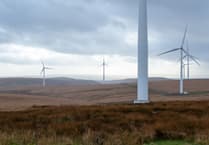El Niño has begun, and scientists are predicting the event to cause record temperatures in the coming year.
Across Europe, USA and Asia, millions have been hit with severe heat.
In the island, June was the warmest month in 30 years, with June 13 reaching 28.1C, the second warmest day of any month since records began.
What is the El Niño/ La Niña cycle?
El Niño and La Niña are two distinct climate patterns caused by wind strength and ocean temperatures in the Pacific Ocean.
Weakened easterly winds over the Pacific Ocean means that El Niño sees warm waters come to the surface off the coast of South America and spread across the ocean.
This pushes a significant amount of heat into the atmosphere which causes heightened temperatures.
Adrian Cowin, senior meteorological officer based at Ronaldsway Airport, said: ‘This warming of the sea surface temperature is a gradual process, usually peaking in December, and gives significant weather impacts especially in the Americas.
‘This usually manifests as drier and warmer conditions than normal for Canada and northern United States, but in the U.S. Gulf Coast and southeast there’s often wetter weather and an increased risk of flooding.
‘The warmer waters have an impact on marine life as well, which is often noticed by the fishermen of South America.
‘El Niño usually lasts nine to 12 months, then the Pacific reverts to a neutral phase or sometimes develops a year or two of “La Niña” or cooler than normal sea temperatures in the same region.’
In contrast, La Niña periods see strengthened east to west winds, pushing warmer waters weswards.
This causes cooler waters to rise up, releasing it into the atmosphere and thereby leading to cooler temperatures.
Although irregular, the climate pattern switches between El Niño and La Niña every three to seven years.
However, with the already increased temperatures caused by climate change, as well as the naturally warming phase of El Niño, scientists warn of record temperatures in the coming period, set to peak in 2024.
How will it impact the island?
Mr Cowin said: ‘The North Atlantic is already experiencing much warmer than normal sea temperatures as a result of climate change and other global drivers such as a “triple-dip La Niña” in the Pacific in the last three years.
‘The British Isles has recorded some record-breaking temperatures this year, and the Isle of Man continues to see warmer months than the long-term average.
‘In El Niño years there tends to be less tropical storms in the North Atlantic but, this autumn and winter, the warmer sea surface temperatures may still drive significant areas of strong winds and heavy rain towards parts of the British Isles.
‘Our weather is driven by other important factors, such as the strength and position of the Polar Jet Stream at high altitudes.
‘In El Niño years there can be an increased risk of colder-than-normal spells across the British Isles during the winter, but this may be offset this winter due to the above average sea temperatures including the Irish Sea area.’
Whilst El Niño is not caused by climate change, it does raise questions of how this naturally occurring climate pattern on top of globally warming tempperatures, will coincide.
Mr Cowin added: ‘I’d suggest that there should be more concern about the global impacts of Climate Change caused by man-made greenhouse gases in the atmosphere, which may increase the frequency and strength of significant weather events and the cycles of La Niña to El Niño in the Pacific, as well as hurricane and typhoon seasons.’
Daphne Cainne, Garff MHK, said: ‘It is clear that the Isle of Man is feeling the effects of climate change, with 2022 being the warmest year on record both in the island and in the UK and it is essential we continue to deliver the objectives of the climate action plan to reduce our CO2 emissions and also to see climate adaptation continue in the island.
‘It is apparent from the temperatures recorded across Europe that there could be serious threats to health and even life.
‘El Niño will make this worse over the next few years.’




